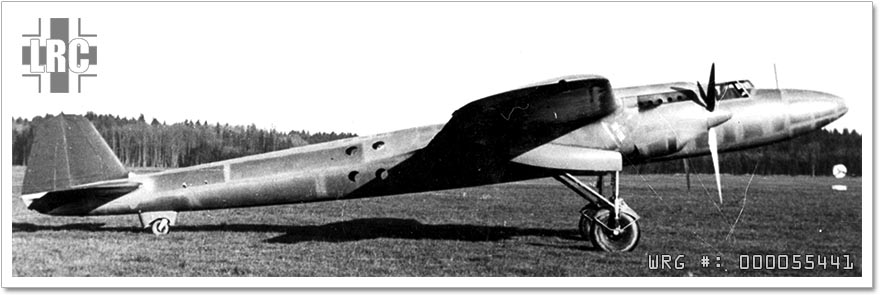Dornier Do 17
Development
In 1932, the Ordnance Department (Heereswaffenamt) issued a specification for the construction of a "freight
aircraft for German State Railways", and a "high speed mail plane for Lufthansa". The factory at
Friedrichshafen began work on the design on 1 August 1932.
When the Nazis took power in 1933, Hermann Göring became National Commissar for aviation with former Deutsche
Luft Hansa employee Erhard Milch as his deputy, soon forming the Ministry of Aviation. The Ministry of
Aviation designated the new aircraft Do 17, and on 17 March 1933, just three months after taking office,
Milch gave the go ahead for the building of prototypes. At the end of 1933, the Ministry of Aviation issued
an order for a "high speed aircraft with double tail," and for a "freight aircraft with special equipment,"
in other words, a bomber. The original design (the Do 17 V1) configuration in 1932 had sported a single
vertical stabilizer, and Dornier continued developing that model. The Do 17 was first demonstrated in
mock-up form in April 1933. The "special equipment" was to be fitted later, to disguise its offensive
role.
 Dornier Do 17 V-1
Dornier Do 17 V-1
In April 1934, the Dornier works at Manzell began project "definition." During this month, the defensive
armament was designed and the bomb release mechanism details ironed out. Production of these prototypes
began on 20 May 1934 and, on 23 November 1934, the Do 17 V1, with a single fin and powered by two BMW VI
7.3 motors, took off on its first flight. Testing was delayed by a series of accidents, with V1 being
damaged in landing accidents in February and April 1935. The twin-tailed V2 (powered by low-compression
BMW VI 6.3 engines) first flew on 18 May 1935 and was evaluated together with the V1 by the Ministry of
Aviation at Rechlin in June. During the tests, the single fin proved to be only marginally stable,
resulting in the V1 being modified with a twin tail. The aircraft was destroyed in a crash after an
engine failure on 21 December 1935. The V3, also fitted with a twin tail, was originally planned to be
powered by Hispano-Suiza 12Ybrs engines, but as these were unavailable, it was fitted with BMW VI 7.3
engines like the V1 and flew on 19 September 1935. The V1 prototype remained the only built machine
with the single stabilizer.
It is claimed that, unlike the Heinkel He 111 series, whose military use was planned from the start, the Do 17
V1 was contracted as a fast six-passenger mail plane to compete with the smaller Heinkel He 70 monoplane It
has been suggested that it was rejected by Luft Hansa, as the cramped cabin was too uncomfortable for
passenger use and the operating costs were too high for a mail plane. According to the story, the three
prototypes remained unused in the Dornier factory in Lowental for almost six months, until Flight Captain
Untucht of Luft Hansa came across them. After receiving permission to fly one of the machines, he
proceeded to put it through an almost stunt flying routine. After landing, he said that "the machine is
as nimble as a fighter, give it more lateral stability and we'll have a high speed bomber!" Untucht's
comments prompted Dornier to redesign the tail unit and revived interest in the type.
Dornier was then ordered to produce the V4 prototype. Some sources state this differed from the V3 in that the
passenger portholes were removed and the single fin was replaced with two smaller ones. Photographic evidence
demonstrates the V3 had twin stabilizers from the start of its construction. The tests of the "twin-tailed"
V4, V6 and V7 prototypes were positive and more prototypes like the V8 emerged as the forerunner of the
long-range reconnaissance version, while the V9 was tested as a high-speed airliner. The V9 machine was
still flying in 1944.
Sources:
Gunston, Bill -
The Encyclodepia of the Worlds Combat aircraft, 1976,
Chartwell Books, Inc., New York
Brown, Eric, Captain -
Wings of the Luftwaffe
, 1979, Airlife Publishing Ltd., Shrewsbury
Gunston, Bill & Wood, Tony -
Hitler's Luftwaffe
, 1977, Salamander
Books Ltd., London
Donald, David -
The Complete Encyclopedia Of World Aircraft, 1997, Brown Packaging Books Ltd., London
Wikipedia - Dornier Do 17

 , 1979, Airlife Publishing Ltd., Shrewsbury
, 1979, Airlife Publishing Ltd., Shrewsbury , 1977, Salamander
Books Ltd., London
, 1977, Salamander
Books Ltd., London





